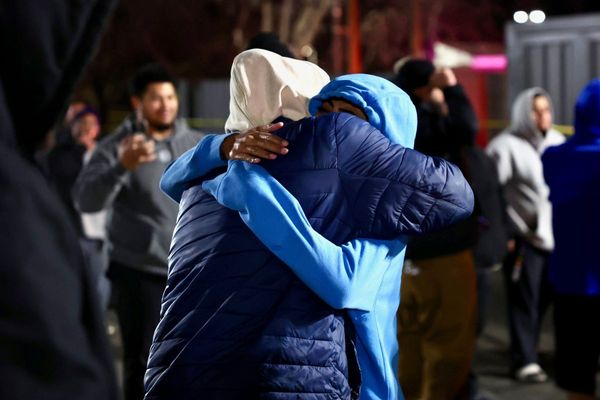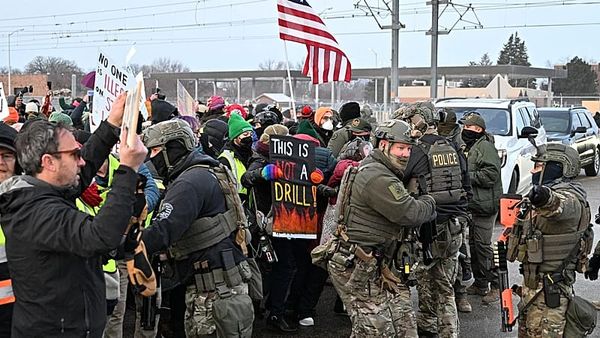

Growing up on a farm in rural Oregon, Gail Simone was a voracious reader as a child, and when her mum used to drag her along to garage sales, she would buy up all the second-hand books she could find.
“One day I found a stack of comics, and the top one had Wonder Woman on the cover … I was just hooked,” says Simone. “I read the story like it was water in the desert, and then I get to the last page and it says: ‘To be continued next issue.’”
Simone, 48, says of reading that Wonder Woman comic: “In a funny way, I’m always looking for the rest of that story.” And she did that by writing her own.
Fast forward two decades, Simone is now the critically acclaimed writer of titles for DC comics and others, including the fan favourite Batgirl, Birds of Prey and Red Sonja. She also became the longest-running female writer on Wonder Woman. She is one of a rapidly growing number of women comic and graphic novel authors who are now at the top of what was once an almost entirely male industry.
Which is a far cry from when Simone started out both as a reader and eventually as a writer. “I won’t lie, it was a bit lonely for a while,” says Simone. “I have endless photos of convention panels with 10 guys and me, it was almost comical.”

She adds: “I was definitely aware [as a child] that all the names in the credits were boys’ names, I remember that I would cling to any comic that had a woman listed in any capacity. There were some tremendous talents, people like Colleen Doran and Louise Simonson, but they could be hard to find in my small town.”
Simone is in the UK this weekend for the annual Thought Bubble comic convention held in Harrogate, North Yorkshire, where she is one of the many comics creators who will be mingling with fans. Of the 69 guest creators listed on the Thought Bubble website, 30 are women. And there are hundreds more female exhibitors over three halls selling their wares.
“As is often the case, it started with the fan base. At conventions like Thought Bubble, it just went from girlfriends being dragged along to something more approaching parity very quickly,” she says.
The queues to meet favourite artists “would suddenly be half full of young women, it was like a sea change. It was lovely to see. And best of all, those women took their talents and started making comics, too. Now some of the most acclaimed voices in the industry are female and non-binary and trans.”
Thought Bubble was set up in 2007 in the basement of Leeds town hall and attracted 500 people. This weekend, footfall is expected to be around 15,000 at the massive Harrogate convention centre.

Thought Bubble’s success, says founder Lisa Wood, is partly due to its commitment to diversity among the guests it attracts. She says: “There was a massive disparity, not many females in the industry at all when I set up Thought Bubble. That was one of the things I wanted to actively fight against and because of that we’ve always been about diversity, about making a more inclusive show, to highlight female artists and it needs to progress more, to non-binary and trans people and everyone who needs to be included.”
Wood isn’t just the originator of Thought Bubble. Last year she took a step back from the direct organising of the convention to concentrate on her main job, that of comic artist. Under the pen-name Tula Lotay she is one of the premier artists working in the industry, her latest work being on the Roaring Twenties adventure Barnstormers and the just-announced folk horror comic Oubliette, coming from the new comic publishing arm of AMC, the TV company behind The Walking Dead. Wood believes the comic industry began to break the male stranglehold with the rise of social media. She says: “Probably about 2010 I started posting my art on social media. I just drew for myself, as a hobby really, but then people started getting in touch and I was getting validation from my peers and people in the industry, and suddenly work started coming in and I haven’t looked back.”
Comics is a broad church, and not limited to the more recognisable superhero output of Marvel and DC. The rise of crowdfunding sites such as Kickstarter has made it much easier for independent creators to produce professional books and get them in the hands of readers without the need for the backing of a big commercial publisher.

Sabba Khan will be at Thought Bubble this weekend for the second year running, with her debut graphic novel The Roles We Play, published in 2021 (and this year in the US as What is Home, Mum?). It comprises 30 interconnected stories exploring themes of identity from the east London Muslim diaspora, in which Khan grew up.
Khan’s comic career came up through the punk-rock ethos of fanzines in the early 2000s, when she was studying architecture at Central Saint Martins, London. She had not been a comics reader from an early age, but then discovered a cache of graphic novels in the college library, and was hooked.

“At the same time I started going to self-publishing fairs with my friend, and we saw all these people who just made their own books and graphic novels and realised nobody has to wait for permission to put something down on paper,” says Khan. “And we were like, yes, we can do this, we’re allowed to, we’re going to make our own comics and print them and bind them and get a table at the fair and that’s what we did.
“It was very immediate, it was very grassroots and there was this punk ethic. It was very playful, but at the same time in the early 2000s, as a woman of colour with a working-class background, I felt very much in the minority, it felt very white and male and middle class. But now I think things are much more diverse and there’s a much wider range of voices.”







